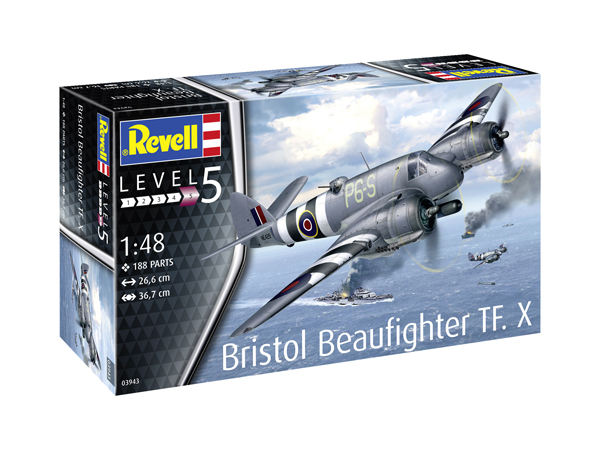
Kit Ref: 03943
Price around: £36.99 GBP; €41.66 Euro; $62.99 CAD; $66.94 AUD; $48.68 USD
In box review with Geoff Coughlin (September 2018)

Our thanks to Revell for supplying our review sample. Revell model kits are available from all good toy and model retailers. For details visit www.revell.de/en
Check out our two Finished Now builds:
Geoff Coughlin plus video demonstrations
David Popple with invasion stripes
It’s always great to have a choice in kit terms and that’s what we now have – two very good models of the Bristol Beaufighter in 1:48 scale – this new-tool from Revell and the older Tamiya offering in various versions.
This Revell kit is more comprehensive and has more options than the Tamiya kit and also comes in at about a third more expensive, so you can choose accordingly.
Here’s a photo from Revell showing their completed Beaufighter – certainly looks good to me.

So what do you get this time around with the new Revell kit – take a look at my video review to find out…
Here’s my summary…
Geoff C.
SMN Quick summary Star rating out of 5
Inevitably, perhaps, I have already heard some picky comments on social media about small antennae omissions or the actual aircraft depicted on the box having different details to the real machine or some other quibble. Honestly, I don’t have time for such things. What you can do is build a very presentable Beaufighter TF.Mk.X from the kit parts and given the excellent range of options like fin fillet, thimble nose and so on, a number of alternatives are possible from what’s provided.
You may want to go beyond the box and acquire a decal sheet so that you can create a different Beaufighter and so be it although the decal options in the kit are just fine.
The build is already well underway!
I just need a diversion from the epic build I am nearing the end of in my Classic Kit build of the Airfix 1:72 Bristol Superfreighter and so I have spent a day on this new Revell Beaufighter and it’s proving very enjoyable and the fit of parts is excellent so far.
The breakdown of parts is different and a bit complex but it all works just fine and depending on when you read these words my full build will either be underway in Aircraft-Build Now, or, completed and you’ll find it in the Revell pages of Aircraft-Finished Now-Revell.
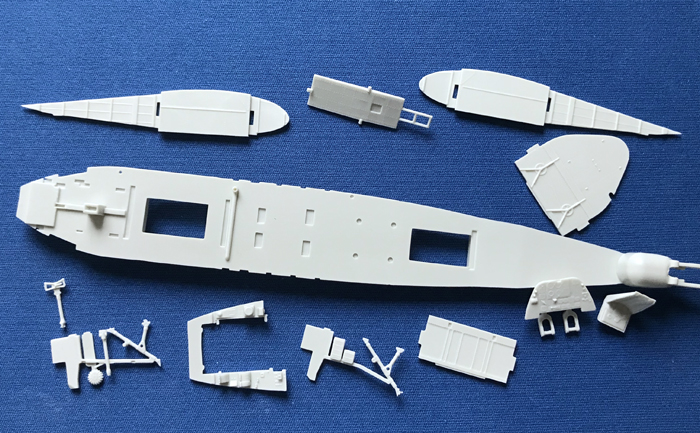
The only addition you’ll see in the photos are a set of Eduard pre-painted RAF WWII belts.
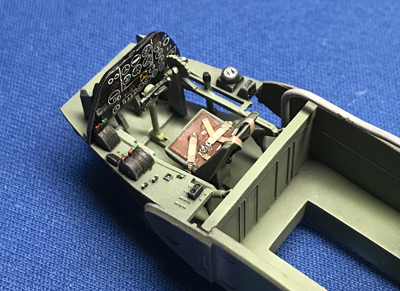
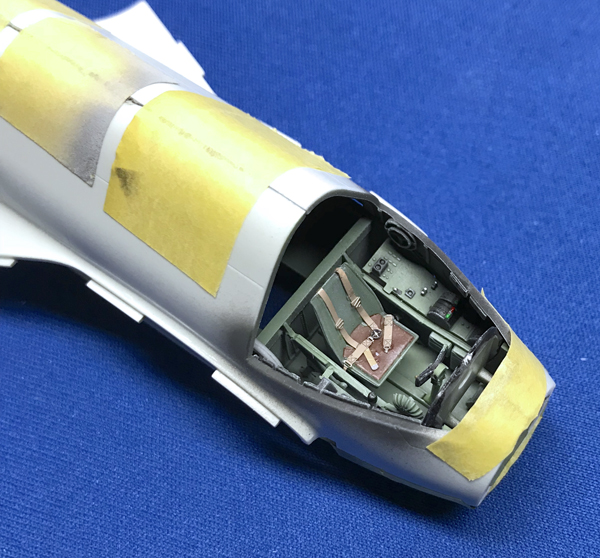
Here’s a little background on the type
The Bristol Type 156 Beaufighter (often referred to simply as the “Beau”) is a multi-role aircraft developed during the Second World War by the Bristol Aeroplane Company in the United Kingdom. It was originally conceived as a heavy fighter variant of the Bristol Beaufort bomber. Upon its entry to service, the Beaufighter proved to be well suited to the night fighter role, for which the Royal Air Force (RAF) initially deployed the type during the height of the Battle of Britain, in part due to its large size allowing it to accommodate both heavy armaments and early airborne interception radar without major performance penalties.
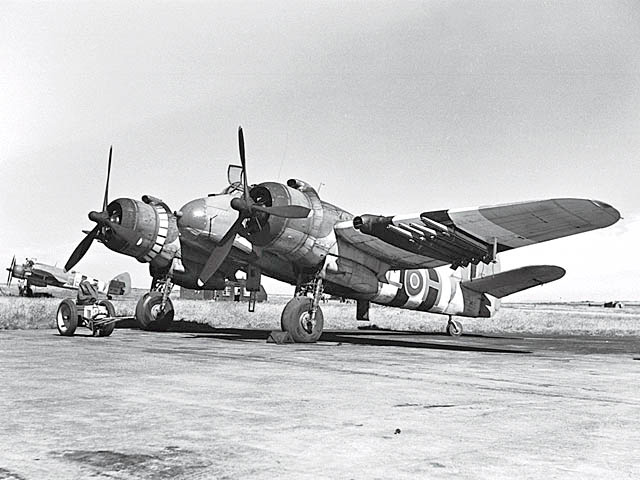
As its wartime service continued, the Beaufighter was used in many different roles; receiving the nicknames Rockbeau for its use as a rocket-armed ground attack aircraft, and Torbeau in its role as a torpedo bomber against Axis shipping, in which it came to replace the Beaufort which had preceded it. In later operations, it served mainly as a maritime strike/ground attack aircraft, RAF Coastal Command having operated the largest number of Beaufighters amongst all other commands at one point. The Royal Australian Air Force (RAAF) also made extensive use of the type in the maritime anti-shipping role, such as during the Battle of the Bismarck Sea.
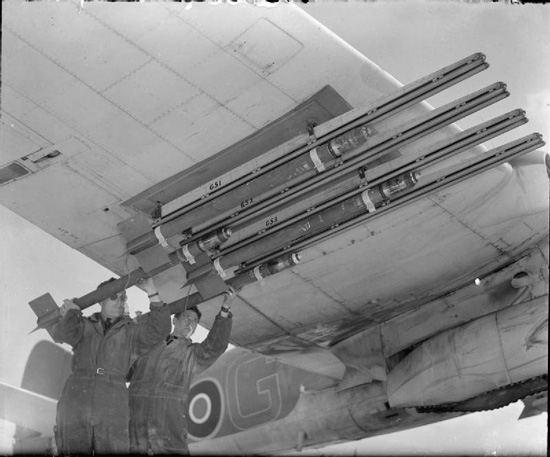
The Beaufighter saw extensive service during the war with the RAF (59 squadrons), Fleet Air Arm (15 squadrons), RAAF (seven squadrons), Royal Canadian Air Force (four squadrons), United States Army Air Forces (four squadrons), Royal New Zealand Air Force (two squadrons), South African Air Force (two squadrons) and Polskie Siły Powietrzne (Free Polish Air Force; one squadron). In addition, variants of the Beaufighter were also manufactured in Australia by the Department of Aircraft Production (DAP); such aircraft are sometimes referred to by the name DAP Beaufighter. (Source: Wikipedia)